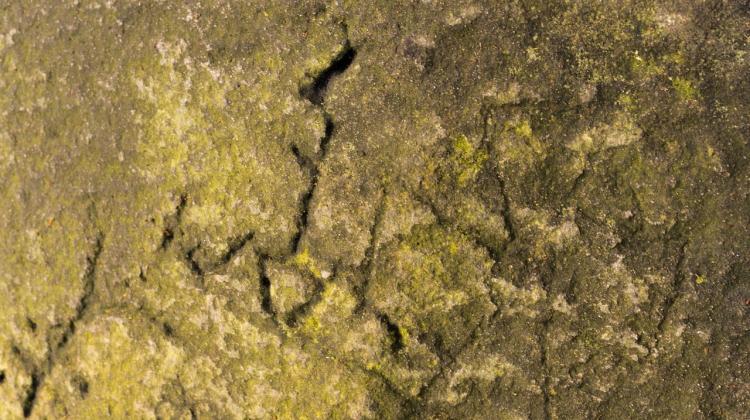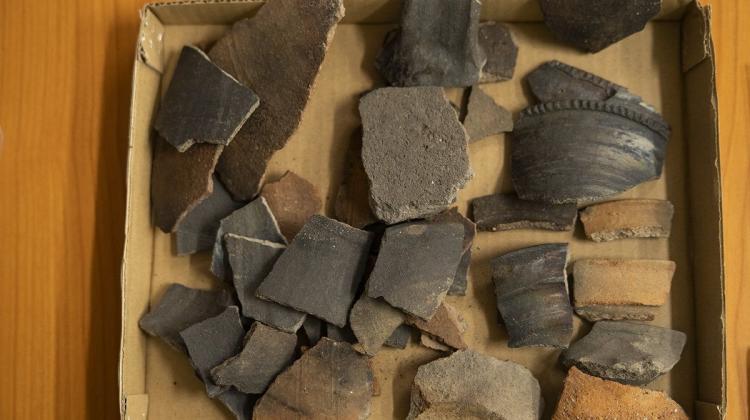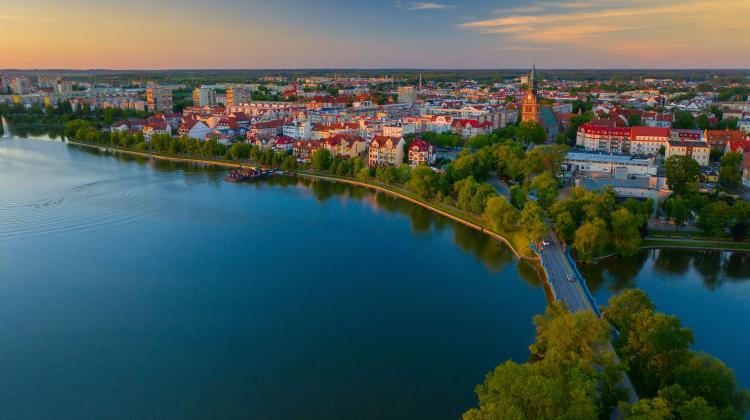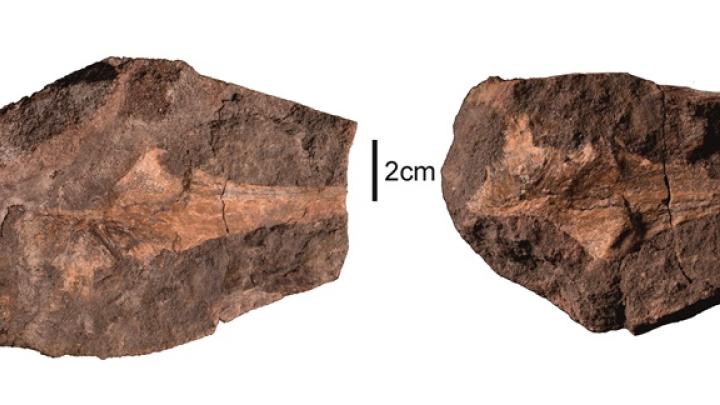Scientists: Rock art exists in Poland too
 Petroglyphs on the so-called Witches' Rock in Silesia. Photo by M. Grzelczyk
Petroglyphs on the so-called Witches' Rock in Silesia. Photo by M. Grzelczyk
Contrary to popular belief - Poland is not devoid of rock art. These are not the spectacular discoveries comparable to the Lascaux cave. But there are known old images carved in rocks, researchers report in the "Rock Art Research".
Scientists have long thought that Poland and the Netherlands are the only European countries with virtually no rock art. Maciej Grzelczyk from the Institute of Religious Studies at the Jagiellonian University in Kraków, Krzysztof Rak from the Institute of Archaeology of the Jagiellonian University in Kraków and Michał Jakubczak from the Institute of Archaeology and Ethnology of the Polish Academy of Sciences in Warsaw were the first to undertake to collect all the information on the subject in one publication.
"It was wrongly assumed that there was no rock art in Poland. Wherever there are mountains or rocks, the inhabitants left traces of their presence, either on rock walls or in caves" - Grzelczyk told PAP. The scientists added that while such finds are rare in Poland, they do exist. He also expressed the hope that the recently published article would be an incentive to give the issue a new look - not so much to search for new posts, as to analyse the ones that are already known.
In the publication "Rock Art Research" authors remind that the oldest confirmed in Poland signs left on the rocks by humans come from the prehistoric flint mine in Krzemionki (Świętokrzyskie Province). The mines functioned during the Neolithic and early Bronze Age (about 3900-1600 BC). In the interwar period, archaeologists came across two pictograms that were created by deliberately wiping the soot that was probably left by a torch. According to the researchers, there were images of foot prints and a dagger. Unfortunately, they have not survived to our time, as the locals destroyed them while illegally obtaining limestone.
The mines in Krzemionki were also the site of the later discovery of a depiction interpreted by some researchers as the mother goddess. It is currently the logo of the Museum in Krzemionki.
In a village in south-eastern Poland - Kontrewers (Świętokrzyskie) there is a boulder with a stone carving depicting two people - possibly a man and a woman, or devils, as both figures have clearly outlined horns. Under the feet of the female figure a crescent is visible, and both figures seem to be playing flutes. Unfortunately, scientists are not able to estimate the age of the carvings.
The authors point out that the greatest number of rock engravings in Poland have been found in the Tatra area. However, these appear to come from the historical times - in total there are more than 50 sites with various petroglyphs. The oldest one is from the 16th century. It is believed that these petroglyphs were made by shepherds, miners and treasure hunters in the 16th-18th century. These are primarily geometric signs - circles, crossed lines, arrows, signatures of authors, and depictions of humans. Most of them are located in the Kościeliska Valley.
Petroglyphs are also known from Wilkowice, from the so-called Witches\' Rock (Silesian province). There are visible carvings including a circle and two crosses, made - according to the article authors - certainly with metal tools. In their opinion, the crosses were engraved by Protestants during the Counter-Reformation (probably in the 17th century), when they were celebrating masses in the so-called forest churches. "In our opinion it is worth to consider the possibility that the pecked circle on the Witches\' Rock was created in some pre-Historic period and recognised as a relic of pagan times by local Protestants who then engraved crucifixes" - the researchers suggest in the journal.
PAP - Science in Poland
author: Szymon Zdziebłowski
szz/ agt/ kap/
tr. RL
Przed dodaniem komentarza prosimy o zapoznanie z Regulaminem forum serwisu Nauka w Polsce.

















